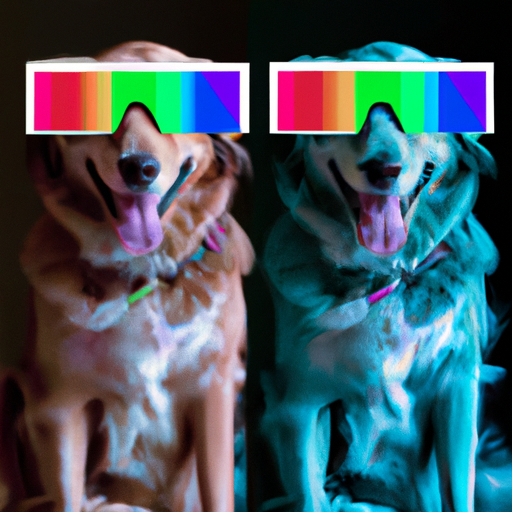Understanding Your Canine Companion’s Vision
Understanding how your dog sees the world can be a fascinating journey. Unlike humans, dogs perceive their environment in a significantly different way. Their vision, in particular, is quite different from ours.
Their world is not a vibrant array of colors as ours is. Instead, they see in shades of blue and yellow, but not red or green. This is due to the types of cells in their eyes. They have two types of color receptors, or cones, compared to our three.
Yet, dogs have their own unique advantages. Their vision is superior in dim light due to a special layer in their eyes called the tapetum lucidum, which reflects light back through the retina.
How Depth and Motion Perception Influence Dogs’ Behavior
Dogs’ eyes are located on the sides of their heads, giving them a wider field of view than humans. This, however, reduces their depth perception. They rely more on motion than on detail.
This might explain why your dog might not immediately find that treat you tossed on the ground. But, don’t worry. Once they detect the motion of the treat falling, they’ll move right towards it.
The Impact of Breed on Dogs’ Vision
Different dog breeds have different visual abilities. For example, breeds that have been developed for hunting have eyes located more towards the front of their heads, giving them better depth perception.
Here’s a table to illustrate this:
| Breed | Vision characteristic |
|---|---|
| Beagle | Good depth perception |
| Greyhound | Wide field of view |
| Pug | Narrow field of view |
Enhancing Your Dog’s Visual Environment
Knowing how your dog sees can help you make their environment more stimulating and safer.
Here are some tips:
- Use toys that are blue or yellow. These colors are easier for dogs to see.
- Make sure toys and furniture are not red or green. These colors can be confusing for dogs.
- Use motion to get your dog’s attention. You can do this by waving your hand or tossing a toy.
How Dogs’ Vision Affects Their Interaction with Humans
Dogs’ unique vision may influence their interaction with humans. They are more likely to respond to visual cues such as hand signals than vocal commands. You might find that training your dog using visual cues can be a rewarding experience that strengthens your bond.
Frequently Asked Questions (FAQ)
Q: Can dogs see in the dark?
A: Yes, dogs can see better in the dark than humans due to a layer in their eyes that reflects light.
Q: What colors can dogs see?
A: Dogs can see blue and yellow but not red or green.
Q: Does breed affect a dog’s vision?
A: Yes, different breeds have different visual capabilities. For example, hunting breeds tend to have better depth perception.
Q: How can I make my home more visually appealing to my dog?
A: Use blue and yellow toys and avoid red and green ones. Also, dogs are drawn to motion, so moving toys can be very stimulating.



